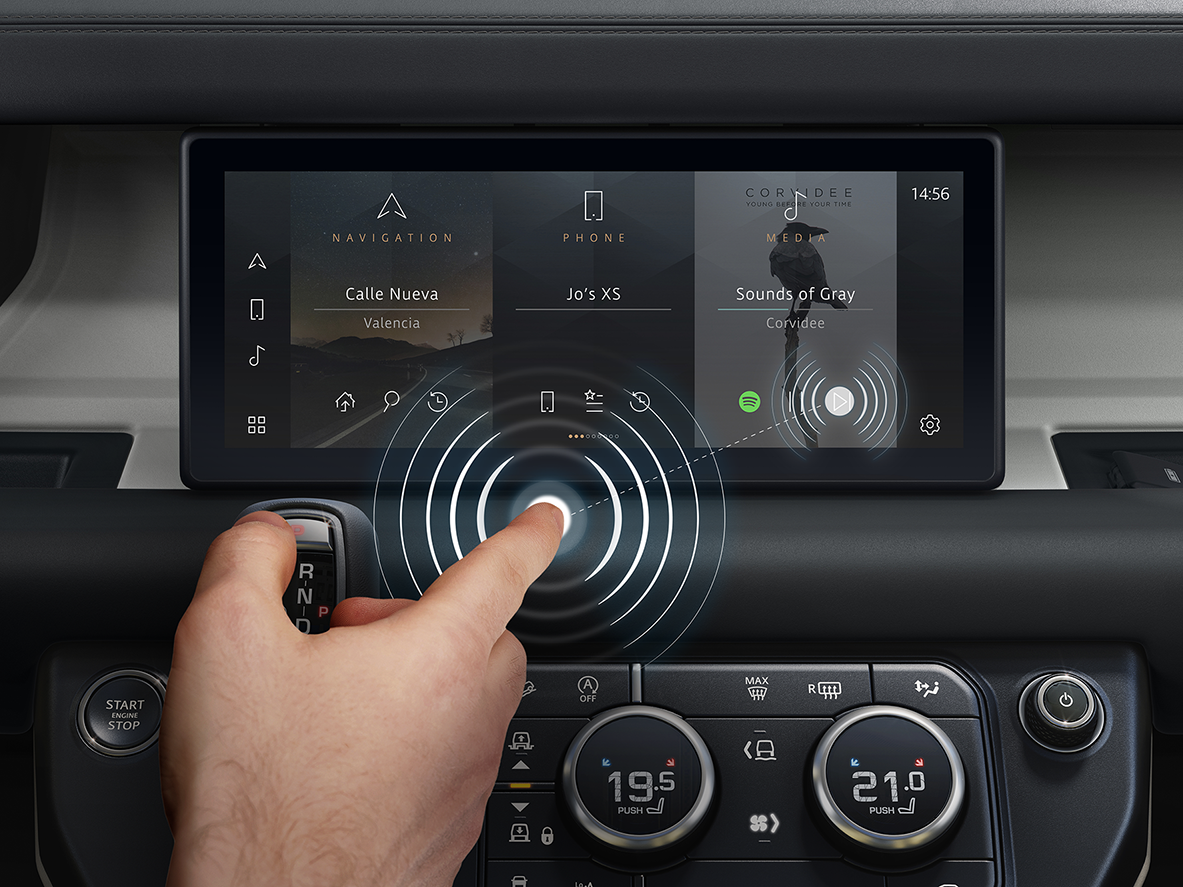Smudges are the bane of the touch screen’s existence. New technology has emerged from a partnership between Jaguar Land Rover and the University of Cambridge that is designed to reduce the spread of bacteria and viruses within a car, and, consequentially reduces the number of smudge points on touch screens.
The patented technology, known as “predictive touch”, uses artificial intelligence and sensors to predict a user’s intended target on the touchscreen – whether that’s satellite navigation, temperature controls or entertainment settings – without touching a button.
The Land Rover Range Rover Velar
Photo courtesy of Land Rover
According to a release, the tech utilizes artificial intelligence to determine the item the user intends to select on the screen early in the pointing task. Gesture tracking technology uses vision-based or radio frequency-based sensors like the kind you find in electronics you use as part of your everyday life, “to combine contextual information such as user profile, interface design and environmental conditions with data available from other sensors, such as an eye-gaze tracker, to infer the user’s intent in real time.”
Trials utilizing the technology showed that it could reduce a driver’s touchscreen interaction effort and time by up to 50 percent, as well as limiting the spread of bacteria and viruses. The tests were conduced in a lab and on the road.
Jaguar Land Rover is championing the innovation as part of its Destination Zero vision. As part of that vision, the company is working toward a world of “zero emissions, zero accidents, and zero congestion”.
The company says that the predictive touch technology can be especially useful when traveling off the beaten trail, where it may be difficult to engage a touch screen button in a timely and orderly fashion. Additionally, it is in these circumstances where drivers will most want two hands on the wheel as often as possible.








